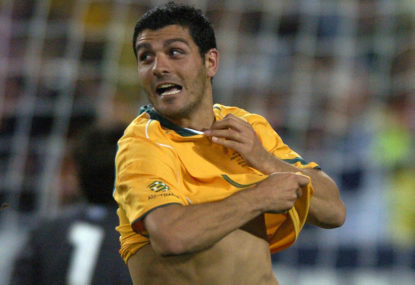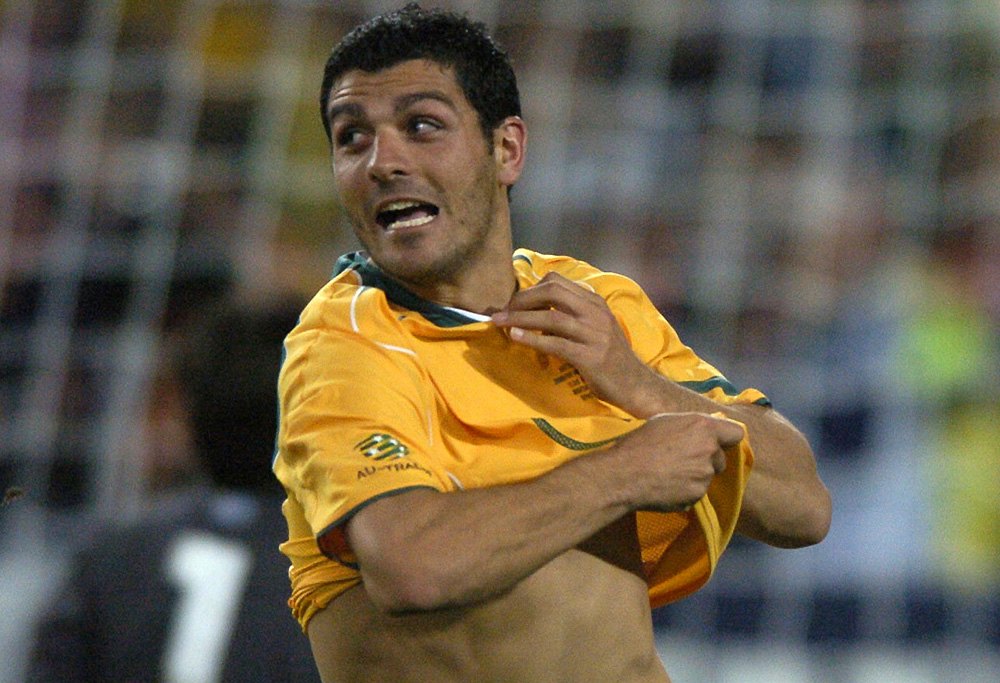Young excellence, promotion battles, and a happy farewell: The Australian team of the week from players around the globe
Even though St.Pauli ultimately lost a high-scoring affair, Jackson Irvine was a standout, as well as scoring a late goal.

The 13th season of the A-League is part of the 137th year of organised football in this country.
The A-League is just ten per cent of the whole story. What about the other ninety per cent?
Helping put me in a nostalgic mood was the book, ‘The Death and Life of Australian Soccer’ by Joe Gorman.
It’s an examination of Australian football from just after the second world war to the present day.
The book brought back some great memories, some of which I had witnessed first hand including the 2005 Uruguay world cup qualifier and the Socceroos versus New York Cosmos game at the Sydney Showground in 1979.
It is more than just a sports book. It touches on culture, politics, history and the Australian identity, all told in an engaging and compelling way.
Thinking about the history of the game, I wonder if there is one era that can truly be called the Golden Age of football in Australia.
What are the candidates?
Perhaps it was the 1880s when the first football clubs were formed not only in the capital cities but in regional centres such as Newcastle and Wollongong.
Or maybe the 1920s when Australia played its first internationals.
Then there was the immediate post-war period in the 50s and 60s when the great migrant clubs came into being, breathing fresh life into the sport.
Maybe you could define eras according to the rhythms of the four year world cup cycles.
It’s hard to top the first qualification for the world cup in 1974.
Then there was the Scotland two-legged playoff for the 1986 world cup. Although Australia lost the tie, they gained many fans with their spirited second leg showing in Melbourne.
The 1990 campaign stands out for me personally. Australia needed to beat Israel in Sydney to advance to the next stage. I was in the crowd that day and remember it vividly because it was the day after the Hillsborough tragedy. People were a bit jumpy.
By kick off there was a huge crowd standing in the concourses the entire length of the stadium.
Australia went behind early but equalised in the 88th minute. The Socceroos then threw everything at Israel. The tension and excitement of those final crazed minutes is something I’ll never forget. The match ended in a draw and Australia was knocked out.
There was the infamous 1998 campaign when Australia blew a 2-0 lead against Iran in Melbourne. Perhaps there’s a certain honour in Australians suffering a gallant defeat.
Of course there’s a strong case for the era around the 2006 world cup being called a golden age, although it still seems a bit recent.

(AAP Image/Dean Lewins)
For mine, the golden age of Australian football was the 1970s.
The migrant clubs were strong and there was a spark and zip about domestic football. Matches were competitive and exciting.
As a kid I used to go to Sutherland Shire home games. I remember watching a Korean import who I thought was the most skilful player in the world. Over the years I heard nothing more about this player and was almost wondering whether I’d imagined him.
So I was delighted to see him mentioned in ‘The Death and Life of Australian Soccer’. Now I can put a name to the memory: Kim Jung-nam.
And because there was almost no television coverage, you had to go to the ground to appreciate the skills of players such as Kim.
Matches were usually played at the same time. The only way to follow the other games was through the public address system at the ground. I loved hearing the progress scores read out loud through the hiss and crackle of a battered old loudspeaker.
A good ground announcer could call out the scores with a certain rhythm, so an upset score like “Marconi nil, Granville two,” with an inflection on the “two,” would sound like verse; all the matches read out one after the other forming a stanza in a football poem that would change subtly over the course of an afternoon.
Nowadays, games are scheduled so that it’s possible to watch every game live on TV without getting off the couch.
In the 70s, all you could get on television were colourful match reports read by Martin Royal on the ABC news. With no pictures, you had to use your imagination, and perhaps that’s why I am fond of that era.
It took a bit of effort to follow local football back then. You had to turn up to the games. You had to read the literature. You had to get ink on your fingers.
That era also included the unforgettable 1974 world cup campaign.
We also loved watching the early days of the national league, originally called the Phillips Soccer League, on the still very new medium of colour television. They were good days.
The passing of time can makes things seem rosier than they actually were, but that’s my take on a golden age of Australian football. I’d love to hear yours.
* * *
I’ve run out of space for the usual review of the week’s football so I’ll summarise it in the awards.
Personality of the week: Harry Kane, for his European Champions League hat-trick and Premier League double.
Team of the week: Heidelberg United, the National Premier League champion for 2017.